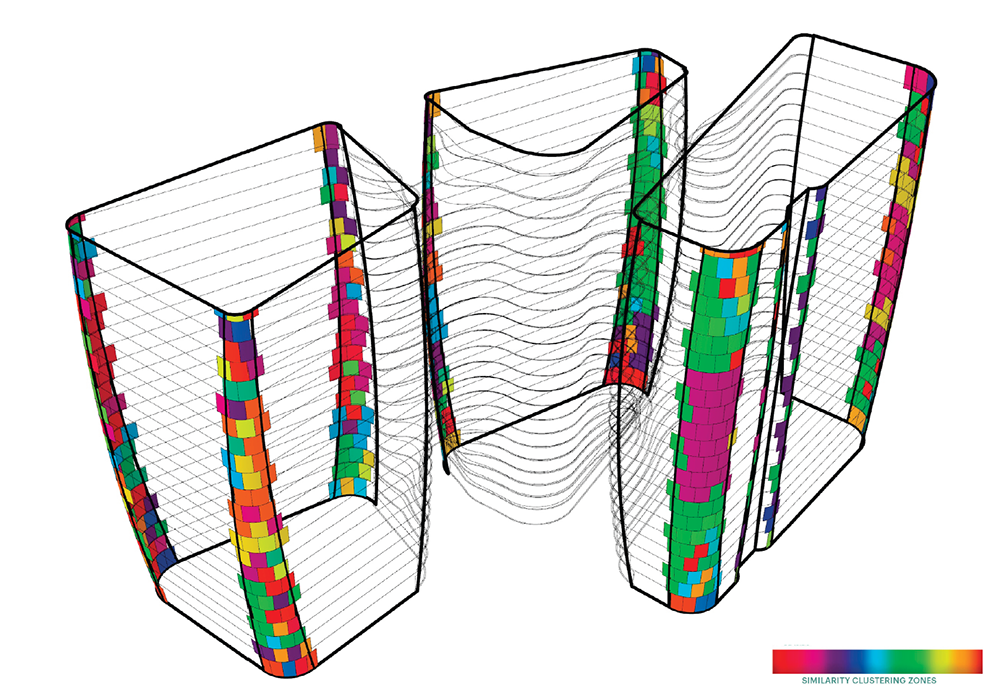KPF Karst Mountains Inspired Facades Optimisation
Abstract
Beijing Century City (BCC) is a mixed-use development of office and residential buildings that will form a new civic nucleus, providing public space at the heart of the site and connecting the urban fabric, and future developments, to the north of the site with the CBD to the south. The concept of traditional shan shui (mountain-water) landscape paintings have been embraced to inform the design language. Using the contrasting ‘hard’ and ‘soft’ representations of ‘mountain’ and ‘water’, this duality divides the envelope into contrasting ‘exterior’ and ‘interior’ facades. The exterior façade picks up the rocky features of the mountain, with textured, three-dimensional, large UHPC panels to establish each tower as an individual entity with prominence on the site. This contrasts with the smooth treatment of the interior facades, that form ‘valleys’ between the buildings featuring translucent laminated stone panels and a warm bronze palette. The “pebble-like” massing of the building overlapped with a complex staggered pattern for the façade generated many nonrepeating, double curvature panels, with hundreds of unique properties for construction purposes. Furthermore, the organic building connections blending into the individual pebble’s shapes and internal facades following the same design approach were also particularly challenging. To become realistically buildable the whole proposal needed a strong yet careful rationalization of its facades. This rationalization study essentially focused on increasing the amount of repetition for the panels of both exterior and interior facades, but also on generating describable properties for the entire building through massing geometry optimization and mould grouping with machine learning clustering methods. After a series of heavy computational processes, the amount of repeating properties and panels drastically increased for all façade types and we radically improved the building constructability and cost viability of the project.
Keywords
Computation, Design Optimization, Rationalization, Urban Fabric, Panels, Machine Learning, K-Means, Clustering.
Bibliography
- Autodesk, Inc, 2022a. Dynamo Introduction. [Online] Available at: https://dynamobim.org [Accessed 30 09 2022].
- Autodesk, Inc, 2022b. Revit Overview. [Online] Available at: https://www.autodesk.co.uk/products/revit/overview [Accessed 30 09 2022].
- Proving Ground, Nathan Miller, 2020. Lunchbox. [Online] Available at: https://apps.provingground.io/lunchbox [Accessed 30 09 2022].
- Robert McNeel & Associates, 2022. Home. [Online] Available at: https://www.grasshopper3d.com [Accessed 30 09 2022].
